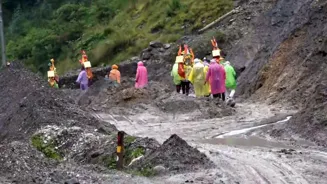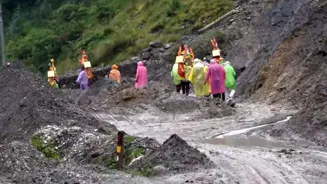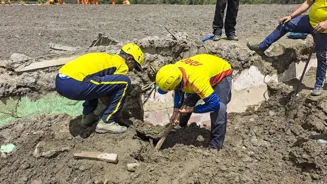Dehradun, Aug 13 (PTI) Two members of a Supreme Court-appointed panel on Wednesday warned of Dharali-like consequences if the much-hyped Chardham all-weather road widening project in Uttarakhand is pursued
in its current form.
They also described the Dharali disaster as a fallout of state authorities ignoring repeated scientific warnings against unregulated construction and tourism activities in the fragile Himalayas.
In a letter written on Tuesday to the road transport and highways ministry, senior geologist Navin Juyal and environmentalist Hemant Dhyani said the uniform 10 m widening of the Chardham all-weather road on the valley side slopes both in lesser and higher Himalayas has created multiple new chronic zones along the widened roads.
They advocated adopting an alternate DPR submitted by them to the ministry nearly two years ago detailing a flexible and disaster-resilient road widening design that could be followed in the Bhagirathi Eco Sensitive Zone (BESZ) which will ensure minimum tree felling and tampering with the slopes.
It will definitely minimise the damages caused due to road widening in the Himalayas, they said.
BESZ covering an area of 4179.59 sq km is a notified are from Gomukh to Uttarkashi of which Dharali is a part and through which portions of the ambitious Chardham road project passes.
Both Juyal and Dhyani were part of the Supreme Court-appointed expert committee on Chardham all-weather road. Juyal has left the panel but Dhyani continues to be a part of it.
Citing the sensitivity of Higher Himalaya towards extreme weather events like landslide lake outburst floods, the experts recommended adopting a sustainable and flexible approach in the road widening project in BESZ.
"We have been warning and protesting continuously for an alternative sustainable approach to ensure a disaster-resilient highway. But so far authorities have not given any consideration to our appeal," Juyal and Dhyani said in the letter.
The letter said these recommendations cover the road stretches that were devastated by the flash flood in Kheer Ganga on August 5.
"We recommended that proposed Netala bypass (near Uttarkashi) should be dropped as it is proposed through pristine forest grown on old landslide deposits which is incised by rainfed streams. If the road is dug through these deposits , it is likely to suffer from slope instability and subsidence because the road would also have to negotiate multiple streams," the duo said in the letter.
At least 6000 trees are marked to be felled for the construction of a 10-km stretch of road under the proposed road widening project between Jhala (below Sukhi Top) and Jangla (near Bairon Ghati)... If that happens, it would certainly destabilise the avalanche debris and could make the 10 km road stretch extremely unstable, the experts said.
In the alternative plan submitted to the ministry, they have identified locations where the road can be constructed towards the river flank using the technique of elevated corridor. High elevation bridges have been proposed in the stream segments so that the boulders that are usually transported during the ice-rock avalanches can be bypassed.
"These bridges were proposed opposite Harshil where we lost our jawans and Dharali where the human loss is yet to be estimated,"the letter said.
On the Dharali flash floods, the experts said there has been an explosion in tourist influx in the upper Ganga catchment in recent years and to meet the requirements, widespread proliferation of new construction took place defying all the rules.
"Dharali falls in the Bhagirathi Eco-sensitive Zone. The catastrophe there is a result of authorities ignoring repeated scientific warnings about the vulnerability of such fragile Himalayan locations and violation of legal provisions made under the BESZ notification which ban construction and development activities on slopes in proximity to rivers and streams," Dhyani told PTI.
A devastating flash flood in the Kheer Ganga river demolished almost half of Dharali village on way to Gangotri on August 5 razing hotels and homestays and leaving more than 60 people missing.
In Dharali, the state authorities not only violated the provisions of the BESZ notification but also Namami Gange notification which prohibits construction of both permanent and temporary nature in the flood plain areas of the Ganga or its tributaries, Dhyanai said.
The Kheer Ganga, which originates from a cirque glacier, traverses around 7 km before it meets the Bhagirathi River near Kalp Kedar temple which was also buried in the debris in Dharali.
Even after the Kedarnath disaster, people were not discouraged to vacate the stream proximal locations, instead, an RCC wall was constructed to prevent flood debris from entering the settlement. This encouraged people to build the resorts and hotels next to the stream. PTI ALM ZMN















